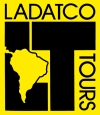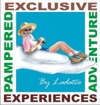

Destinations
Experiences
 |
L A
D A T C O T O U R
S |
 |
||||||||
| HOME | South America | Falkland Islands | Antarctica | Unique Destinations |
Unique Experiences |
Newsstand | ||||
|
Nazca area |
|
OTHER PLACES OF INTEREST IN THE AREA OF NAZCA:
Antonini Didactic Museum:
A collection of archaeological pieces of the different stages of the Nasca culture as well as trophy heads, musical instruments like pan flutes, textiles, mummies, etc. are exhibited in this museum. These discoveries are the result of the excavations done in “Cahuachi”, the largest mud maid ceremonial center in the world. The museum also provides the chance to see the Bisambra canal, which shows the magnificent hydraulic engineering work of the Nascas.
Paredones:
Kilometer marker 1 of the Nasca-Puquio Highway (5 minutes from Nasca)
It is an archaeological site that probably was an Inca administrative center. Formed by numerous rooms, terraces, and patios, its buildings have stone foundations and adobe walls.Cantalloc Aqueduct
4 km / 2 miles from Nasca (15 minutes)
It is an aqueduct built by the Nasca culture which still works today. Flagstones and acacia trunks were used to build it and they have resisted the march of time. The Nascas Have constructed more than 40 subterranean canals that filtered water from underground and directed it to the reservoirs. Even if it never rains in Nasca, the water descends underground from the Andean Cordillera towards the sea. The subterranean canals or aqueducts are situated between 3 and 6 meters deep, their average width and height exceed half a meter and are covered by river rock and stone slabs. The canals had a spiral shaped breathing hole, which also served for periodical cleaning jobs. The canals are still being used by the local farmers.Cahuchilla Cemetery
Individual and multiple graves can be seen. The multiple tombs probably corresponded to important persons buried in the company of their servants. The bodies were mummified, exposing only the head from the mummy bundle, which was covered in some cases, with feather masks.